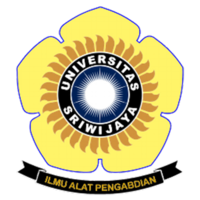Sebaran Residu Endosulfan dan DDT di Lahan Pertanian Kecamatan Wanasari, Kabupaten Brebes
Abstract
Poniman P, Soeprobowati TR, Helmi M. 2020. Distributions residue of endosulfan and DDT in lands agricultural wanasari sub-district, Brebes regency. In: Herlinda S et al. (Eds.), Prosiding Seminar Nasional Lahan Suboptimal ke-8 Tahun 2020, Palembang 20 Oktober 2020. pp. xx. Palembang: Penerbit & Percetakan Universitas Sriwijaya (UNSRI).
As the result of pesticide use by exaggerated on farming sector can causing land degradation. The movement of some shallot farmers agriculture from Brebes Regency to neighboring districts, such as Cirebon, Majalengka, and Kendal is evidence of the degradation of shallot land in Brebes. The pesticides of Endosulfan and DDT were many and often used to control pests during the green revolution. The research aimed to determine the distribution residues of endosulfan and DDT in the upstream area of Wanasari sub-District. The research was carried out by taking soil samples in the field, analyzing pesticide residues in laboratory, and mapping the distribution of residues. A total of 45 soil sample points were collected from the upstream part rice fields of Wanasari sub-District, Brebes Regency. Residue analysis was carried out at the Integrated Laboratory of the Agricultural Environment Research Institute, using the QuEChERS method. Meanwhile, the residue distribution mapping used the Spline interpolation method. From the identified land of 4,688,825 ha, it was detected that the endosulfan residue in the high-very high category was 1,605,576 ha (34.2%) and the high-very high category of DDT residue was 752.2028 ha (16.0%).
As the result of pesticide use by exaggerated on farming sector can causing land degradation. The movement of some shallot farmers agriculture from Brebes Regency to neighboring districts, such as Cirebon, Majalengka, and Kendal is evidence of the degradation of shallot land in Brebes. The pesticides of Endosulfan and DDT were many and often used to control pests during the green revolution. The research aimed to determine the distribution residues of endosulfan and DDT in the upstream area of Wanasari sub-District. The research was carried out by taking soil samples in the field, analyzing pesticide residues in laboratory, and mapping the distribution of residues. A total of 45 soil sample points were collected from the upstream part rice fields of Wanasari sub-District, Brebes Regency. Residue analysis was carried out at the Integrated Laboratory of the Agricultural Environment Research Institute, using the QuEChERS method. Meanwhile, the residue distribution mapping used the Spline interpolation method. From the identified land of 4,688,825 ha, it was detected that the endosulfan residue in the high-very high category was 1,605,576 ha (34.2%) and the high-very high category of DDT residue was 752.2028 ha (16.0%).
Keywords
land degradation, pollutant of agriculture land, food security
Full Text:
PDFArticle Metrics
Abstract view : 332 timesPDF - 692 times
Refbacks
- There are currently no refbacks.

